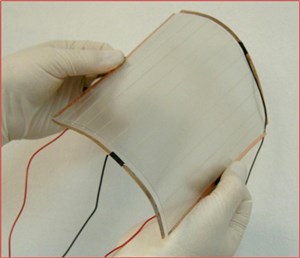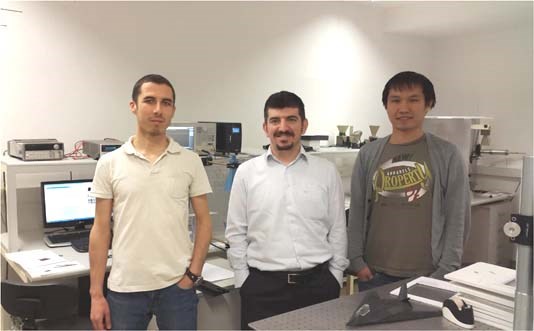In recent decades, engineers and scientists have been working on new stealth technologies that make objects less visible to radar detection. Such technologies have generally used passive surfaces to absorb electromagnetic waves. Active camouflage, however, inspired by nature, could provide a perfect means of concealment by allowing an object to blend into the background. Up to this point, the realization of “adaptive” camouflage systems has been hindered by a lack of materials that are active in radar frequencies.
Now, a team from the Bilkent University Department of Physics, led by Asst. Prof. Coşkun Kocabaş, has successfully developed active radar-absorbing surfaces using atomically thin graphene electrodes. The team discovered a new class of surfaces capable of real-time electrical control of their microwave reflectance. These active surfaces could enable new technologies for adaptive camouflage.
“Graphene, the 2D-crystal of carbon, is the key material behind this new technology,” explains Dr. Kocabas. “Graphene has a unique electronic band structure, which yields electrons with very large mobilities. These mobile electrons can respond quickly to a fluctuating electric field of microwaves.”
 The device developed by the team consists of ionic liquid electrolytes (liquid organic salts) sandwiched between two large-area graphene electrodes. The microwave reflection from the graphene surface can be tuned by the voltage applied between the electrodes. The results of the study have been published in Nature Communications (6:6628, 2015).
The device developed by the team consists of ionic liquid electrolytes (liquid organic salts) sandwiched between two large-area graphene electrodes. The microwave reflection from the graphene surface can be tuned by the voltage applied between the electrodes. The results of the study have been published in Nature Communications (6:6628, 2015).
“The main challenge is to synthesize large-area high-quality graphene on thin polymer substrates,” notes Osman Balcı, the PhD student who fabricated the devices. “We managed to synthesize a 20×20 cm2 single layer of graphene using chemical vapor deposition and then transferred the graphene on thin polymer layers. It’s amazing that graphene only 3 angstroms in thickness can absorb microwaves with a 3 cm wavelength.”
Asked about the significance of the research, Prof. Şefik Süzer of the Department of Chemistry commented, “What is particularly noteworthy about this work, published in such a high-impact journal, is that it is all ‘made in Turkey’ and ‘made at Bilkent.’”
The team has now started tests on adaptive camouflage in visible and infrared wavelengths. If all goes well, they hope to achieve camouflage systems to cover the entire electromagnetic spectrum.

